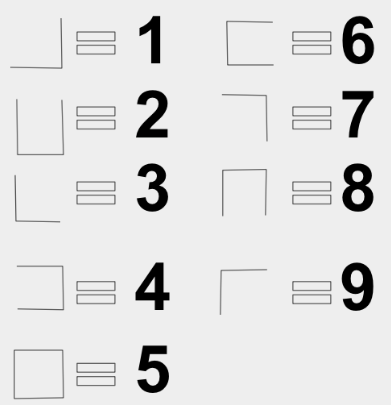The Importance of Language and Communication in Technical Industries (Particularly AV)
 For this article, I wanted to step away from AV and all that fun stuff and talk about a far bigger issue, which is communications. One thing that became very clear to me very quickly when I moved from being a long term “AV guy” to being an end user is that we have some pretty big communications gaps.
For this article, I wanted to step away from AV and all that fun stuff and talk about a far bigger issue, which is communications. One thing that became very clear to me very quickly when I moved from being a long term “AV guy” to being an end user is that we have some pretty big communications gaps.
But before we start getting into them, let’s start with a famous quote. Are you familiar with the following? And do you know who said it?
“I know you think you understand what you thought I said, but I’m not sure you realize that what you heard is not what I meant.”
I will hold off answering who said it until the end of the article. But this quote really gets to the heart of our communications issues.
There are many words and concepts that have dramatically different meanings based on our experience and most importantly, context. Take the name of our industry: AV. It means audiovisual, right? Not to everyone. If I was in IT, there is a good chance that I might define AV as anti-virus. And if I’m in the self-driving automobile space, then it’s actually autonomous vehicles.
So as we can see, it’s important to ensure that we are on the same page as other folks PRIOR to getting into depth on what we want to accomplish.
A funnier one happened to me years ago when operating a function in Vancouver when I was a hotel AV guy. The meeting was for the NRA. This seemed odd to me as this was Canada and we really had no need for the NRA because the NRA is the National Rifle Association in the U.S., right? Nope. This was indeed a Canadian group. It was the National RENDERING Association. I will just say this about the NRA: They were not rendering graphics. Do not Google this topic. [Editor’s Note: I obviously Googled this. Let me save you the trouble. “Rendering” is the business of selling or getting rid of the extra parts of livestock slaughtered for food consumption. It’s gross, but not really scandalous.]
A far more relevant example for us in our space is the word collaboration. If we talk about collaboration or a “collaboration solution,” a person in the AV world is likely thinking about T1V, Prysm, Bluescape, or even Google Jamboard or Cisco Webex board. This is how we define collaboration. However, if you go and look for job descriptions for the director of collaboration in the enterprise world, they are talking about Slack, Teams, G-Suite, Box, etc. Maybe videoconferencing. They are talking about the applications that enable folks to collaborate together every day. In fact, most of the established AV solutions that we think about are totally foreign to them. So we have a hill to climb in order to make it clear what we have to offer.
One word, two meanings. Two very different meanings when we are attempting to bring solutions to our customers. Bring the wrong one and you lose credibility.
One final example. Years ago, I was working at a large tech company and we finally convinced all the right people to allow us to build a dedicated VC room. I was traveling so my boss (a non-AV guy) called the integrator, with whom we had a great relationship, and told them we wanted a flagship VC room. To him, this dedicated room was indeed going to be a flagship. The integrator took this to mean a “pull out all the stops, fully-featured, all the bells and whistles, no expense spared” videoconferencing room. The quote came back for 110K, or so. The boss freaked out. He just meant a simple dedicated room. After I was able to iron out that little faux pas, the quote came back at around 25K and we moved on and got it done.
So the first takeaway is that we need to take the time to ensure we are all on the same page.
These examples lead to a great little article I found by Dr. Alan Zimmerman (a communications pro) in which he lists his two laws of effective communication. You should read the linked article. It’s a five-minute read at most and is very enlightening.
-
You must understand the nature of effective communication.
What this means is that we have to understand that there is a TON of stuff that goes into effective communication. News flash: It’s on both sides of the equation. When we attempt to communicate with another person or persons, a bunch of random neurons in our brain are firing away and creating words, facial expressions, body language, etc. that are relayed to other people and has to get past their inner turmoil, environmental distractions, their inner turmoil interpret them and decode them via random neurons in their brains.
When you really get into it, it’s a miracle that any of us manage to communicate at all. The most effective communicators are those people that understand these different stages and work to overcome all of them. Let’s take a look at all the various stages. And keep in mind, each of these stages has many things that can impact it.
Seven Stages of Effective Communications
IDEA! > Encode > Delivery > Transmission > Receipt > Decode > Understanding
The idea is just the nugget that forms in our brains that we want to pass on.
Encode is the process by which we start selecting words to verbalize that idea. As we get older, this part gets more interesting as we have both a much more vast language set to apply and the determination to be more precise. And of course, the frequent pauses when our aging grey matter opts to shut down mid-sentence and suddenly regurgitate a 25-year-old song lyric from Roxette. (That might be just me though.)
Of course, age and linguistic depth can be a hindrance as well. I can be rather loquacious and am never shy at deploying sesquipedalian words that can be out of reach to those not as enamored with language as I am. Or in simple terms, I can use a ten-dollar word that my audience may not understand. This can really kill things as some folks may even feel like you are mocking them. Selecting the right words and knowing when to define a word that may not be as well known is key (especially as we dwell in both technical jargon and engineering terms).
Delivery is the phase where we form sentences, add dramatic pauses, display body language and all manner of other elements to help get our message across. Ever try to pay attention with a nervous pacer or pen fidgeter, etc? It can be maddening.
Transmission is where we start to lose control. This is the temperature in the room, the background noise, how close we are to lunch, all the things that impact how the audience hears/sees what happens. This is also why we should pay attention to those little things and control what we can. Close the blinds, check the temperature, bring snacks (if appropriate).
Receipt. Now we are really at the mercy of others. This is how the folks hear us. What mood they are in? Are they focused on us? Are they questioning the relevance of what we are talking about? All sorts of things get in the way of their ability to take in the message that we are attempting to deliver. Remember: we HEAR noises but we LISTEN to things that are important to us. Or something like that. Or so my wife keeps telling me.
Have you been in that meeting where folks start drifting away? Paying more attention to their phones? How do you get them to pay attention when it’s the last meeting in the day and there is a happy hour afterward? There’s always a way. Mark Coxon did an AVUser Group meeting a while back and converted his session to a game show with full-size candy bars as prizes! FULL SIZE!!! Net cost — well under ten dollars.
Decode. Do they understand us? Are we using words that are common to both of us? Are they forming a meaning in their brains that is the same as what we intended? Back to the collaboration example above.
While we have no way of directly controlling this part, by paying close attention to body language, the pensive looks, the tilted heads, the “he looks like he wants to ask a question” expression… all these things can prompt you to maybe restate something, give another example, ask for questions, etc.
Understanding is the goal if we did a good job all around.
As you can see, there is a lot to all of this.
A good lesson can be taken here from the Chinese (traditional) character for the word listen. It is pronounced “ting,” and it is made up of four characters: the heart, the mind, the ears and the eyes.

Effective communication makes use of all of them.
-
Take time to communicate.
It is said that we have two ears and one mouth and need to learn to use them those proportionally. (And for those that know me, I know! I am always trying to listen more and speak less.) Effective communication starts with active listening and asking question after question. Too many times I have seen vendors come in and want to solve, well, everything, when what should be happening is just listening and learning. Find out where the real problems are. I can’t count how many times I have had a dealer offer to fix some tech thingamajig that wasn’t an issue. It was fine, it was just anathema to an AV person. Understand WHY we do the things we do. Learn our language. Take the time to let us tell you what problems we face. Listen well, identify problems, then help us solve them.
I learned an exercise years ago when I was an instructor in the military that I try to go through with everyone that I work with. I find it really effective at helping to make the point about learning to talk to others more effectively. In general, multilingual people have no issues with this exercise as this is second nature to them. But us monolingual folks, not so much. Normally this is done with a part one, then I erase the whiteboard and then ask for an answer, but we will keep it simple for this article. Here we go.
I present you with a new set of characters that we need to use in place of numbers.

If we were doing this live, I would give you a few minutes to study them and then I would erase them and put up the following formula for you to solve.

In this example it’s pretty easy right? We can see the numbers. But what did you answer? Did you answer: 9? If you answered with 9, then I’m sorry, but you are wrong.
The answer is:
![]()
The answer is the symbol for 9 because that is the language that the client speaks.
Once you are in the mindset where you are answering with the symbol instead of 9, you are well on your way.
If we take the time to learn that lingo, to be more effective communicators, everything just gets easier.
I had a comment recently on another article in which a person who did government work mentioned the peculiarities of dealing with the government. It’s just another language. Anyone that sells into different verticals is vaguely aware of that language. Military, healthcare, houses of worship, higher education, tech vs. financial enterprises … all have their little nuances. And if we take the time to really understand the client, they will reward you with more business. At a previous job, we had a vendor that I tried to fire after I got there. I was quite unsuccessful (long-term) in that attempt because they knew us far too well. They spoke our language, they knew why we did things, they knew our culture and they got rewarded with lots of business. We got through the old issues that made me want to fire them in the first place and moved forward, all because they knew us and our lexicon.
Thank you for reading and as always, please let me know your thoughts.
*1 – The quote about listening and hearing is frequently attributed to the master of doublespeak… the venerable Alan Greenspan. But in actual fact, the first attribution was to a U.S. state department representative named Robert McCloskey in 1984.
*2 – In case you want to do that communications exercise and want to know how to remember the symbols… they are the outlines of the quadrants of a tic tac toe square.






